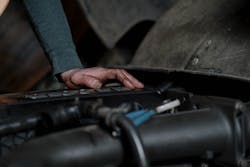Delayed Parts, Labor Shortages Cause Problems for Body Shops
May 4, 2022—Body shops are currently navigating a frustrating combination of backordered parts and labor shortages, which is causing increased customer wait periods and increased costs.
According to the Journal Inquirer, some shops have started implementing the use of used parts when possible due to the difficulty of accessing new parts at this time.
"If you don't have parts, you can't finish the job," says Sean Scalley, a body shop manager at Lynch Toyota in Manchester, Connecticut.
Shop owners have reported that some vehicles they are working on have had to wait up to six months for parts, which range from bumpers and doors to airbags and dashboards.
The difficulty in getting these parts has created an increase in demand, which results in higher costs that seem to keep going up. Inevitably, this causes an increase in the cost of the overall repair job.
"The hardest part about it is trying to keep customers informed," says Jeff Olender, one of the owners of Olender's Inc. in Vernon, Connecticut.
On top of long wait times and high prices, body shops are also feeling the impact of labor shortages. Some shop owners report being understaffed while simultaneously having to account for the same amount of work coming into their shops that they would have were they fully staffed.
Shops seem to be having difficulty attracting younger qualified people into the trade as older employees begin to retire. This throws off the balance, creates smaller staff sizes and can also attribute to longer wait times for customers.
"There's not a lot of people who want to get into body work," says Adronne Knight, an employee at Maaco Auto Body in Manchester. "People can go work at Amazon and make a similar amount."



